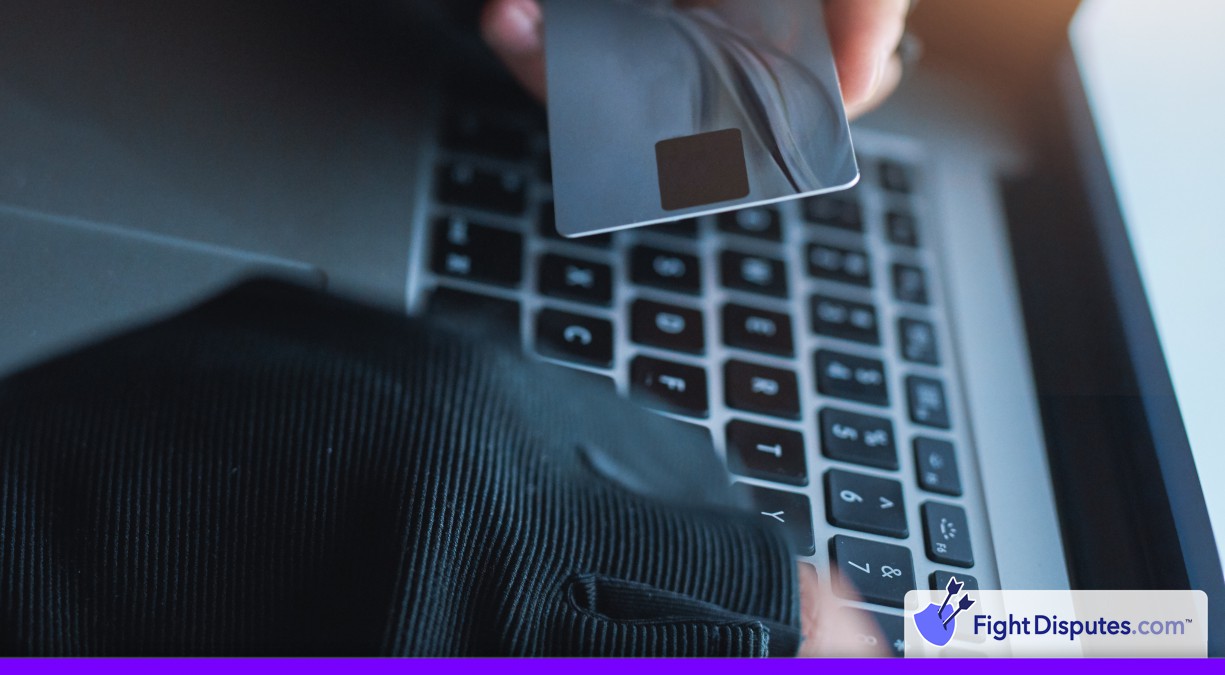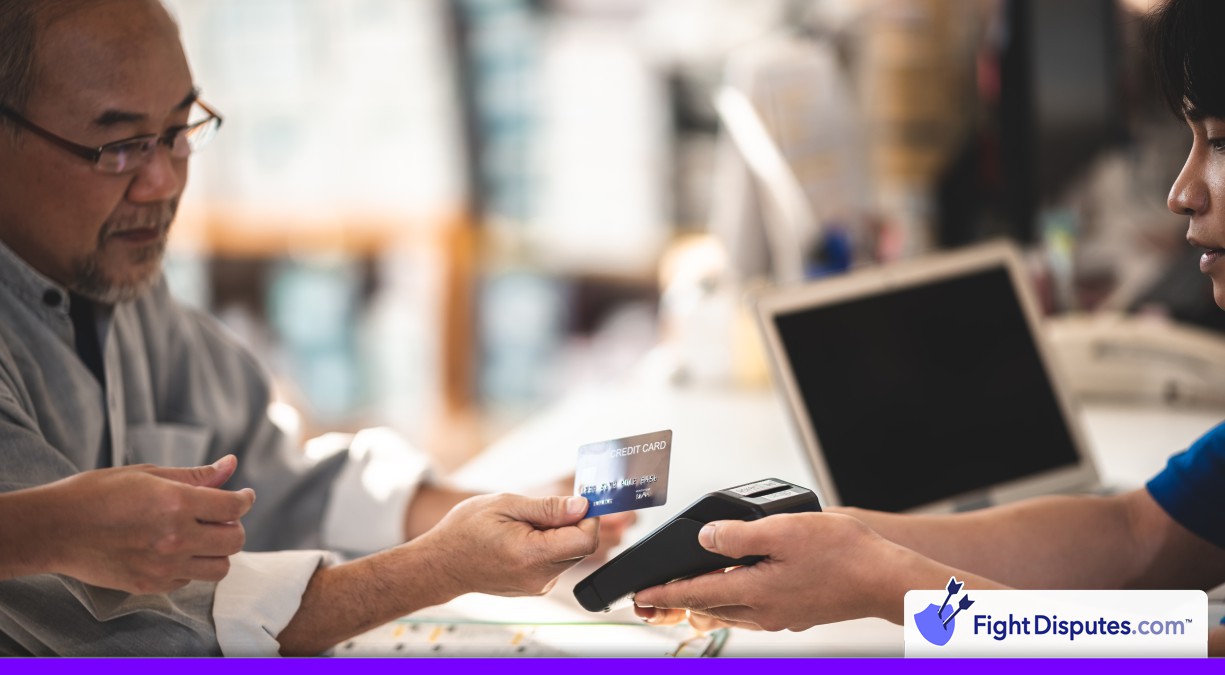10.1: EMV Liability Shift Counterfeit Fraud
Merchants who still swipe chip cards instead of the chip reader could wind up paying for any fraud on those transactions. Back in October of 2015, the payment networks changed who pays for counterfeit card fraud. Before that date, the banks and card issuers covered those costs. After that date, when a customer hands you a chip card but you swipe it instead of having them insert it into the chip terminal, any fraud that happens is your financial responsibility.
This situation happens whenever a customer hands you a chip card but you run it through the old magnetic-stripe reader. You instantly inherit the fraud protection responsibility that banks used to cover. Chargeback fees now come straight out of your business account instead of being the bank’s problem. They can start to add up faster than you’d expect.
Whether you wind up paying for fraud or stay protected can depend on how you process each card. Payment networks set up these laws and made sure that merchants had a strong financial reason to switch, and to encourage everyone to use the safer chip technology.
How It Works
A fraudster who walks into your store with a counterfeit card is counting on the fact that you’ll make one big mistake. They hand you something that looks just like any other credit card. Underneath that familiar plastic is a high-tech clone loaded with stolen card data. This copied information sits right there on the magnetic stripe, just waiting to be used for an unauthorized purchase.

Probably the trickiest part of this whole situation for most business owners is the EMV liability policy change. Your payment terminal can read those EMV chips just fine. Sometimes the chip reader gets slow, or maybe your customer mentions that their chip looks scratched up and won’t read. In moments like that you’ll probably make what seems like the obvious choice and just swipe their card through the magnetic-stripe reader instead. That one small choice just moved the fraud liability onto your business.
After walking away with whatever they bought, the fraudster leaves the cardholder with no idea that anything went wrong until they finally check their monthly statement. Card businesses give cardholders a full 120 days to dispute these transactions. They usually don’t dig into their statements the second that they get them. That means you could be looking at a few weeks or even a few months before anyone notices what happened.
Once that cardholder files a dispute, their issuing bank investigates the charge and realizes instantly that it was processed without full chip authentication. Even though your terminal could read and verify the EMV chip, you ran it through the magnetic stripe reader instead. That’s everything the bank needs to see. They’ll reverse the charge instantly and within a few days you’ll get sent a chargeback. At that point you have roughly 30 days to provide evidence and challenge their call. Without proof of chip authentication, you’re almost sure to lose that fight.
There’s a big difference between just owning EMV-capable equipment and actually putting it to work. Card networks and issuing banks don’t actually care if your terminal supports chip reading – what matters is if you used that feature when the transaction took place.
How it Affects Chargeback Prevention
EMV compliance acts as your financial shield against fraud chargebacks. Process a chip card and you’re moving the fraud liability back to the card issuer where it belongs. That’s actually the whole point behind the liability change that happened a few years ago.
Merchants run into problems right here. You have a chip card in your hand, yet you swipe it instead. Maybe your chip reader is having problems that day, or you’re just trying to move the line along faster. That single swipe choice just made you liable for any fraud that happens on that transaction. Manual entry works in the same way – the instant you type in those card numbers, you’re accepting the danger of fraud.
Payment processors watch your chargeback rates like hawks and they take action at that 1% threshold. Too many fraud disputes will make your processing fees climb on every transaction. Some processors will even start placing restrictions on your account and in very bad situations they might drop you altogether as a client. Payment processors just don’t want to work with merchants who can’t manage basic fraud-prevention measures.
EMV compliance puts you in a much stronger position during disputes. Process that chip correctly and you’ll have evidence for representment cases. It’s hard to challenge chip transactions because the data proves that you followed the right protocol and the liability stays with the card issuer where it should be.
It’s what shapes how processors view your business exposure. High-danger merchant categories especially need every edge that they can get and EMV usage shows processors that you care about fraud prevention and know what’s expected of you in the payment ecosystem.
Example Scenarios
It’s Friday night and the dinner rush has just hit your restaurant. Your server works with ten different tables while customers are coming through the door. At the same time, that chip reader at the bar is running very slowly tonight. Your server decides to swipe the card instead because nobody wants to wait around. Fast forward two months and you get hit with a chargeback for $847. You call the bank and they tell you that since you didn’t use the chip reader for that transaction, this fraudulent charge is now completely your problem.
Maybe you own a small boutique downtown. A customer comes up to the counter to pay for their items. Their chip card still won’t cooperate after three tries. Your newest team member remembers something about a “fallback mode” from training and decides to swipe the card to finish up the $325 sale. Happy with what they bought, the customer walks out and everything seems fine. Six weeks later you find out this was actually a counterfeit card. You lost that merchandise and you’re also out the money.
Situations like these play out in businesses across the country day in and day out. That cashier that you brought on board last month probably has no clue about EMV liability laws. Nobody took the time to explain how the chip reader actually works.
These mistakes can get expensive pretty fast – one high-dollar transaction gone wrong can cost you thousands of dollars in a single hit. Even the smaller transactions throughout the week can slowly cut back on your profit margins if they keep happening. Banks have made it plain that they won’t be covering these losses for you anymore. They’ve put that financial responsibility directly on merchants who don’t use chip technology.
Requirements and Timeframes
Customers can dispute credit card charges, and you only have 30 days to respond with your evidence. Customers get a full120 days from the original transaction date to file their disputethough – this timing gap means you might suddenly need records from four months ago to prove you handled everything correctly.
Keep records that show you actually used the chip reader for each transaction. Print and save all the receipts and store all your transaction logs somewhere safe. Disputes require strong proof that the customer inserted their chip card and completed the transaction.
Payment processors are always pushing out software updates and these updates are not optional – they need to be installed as they arrive. Miss a few of them and you can lose coverage in no time, sometimes without even realizing that something went wrong until it’s way too late.
Every once in a while, your chip reader will act up and you’ll have to swipe the card instead of running the chip. These payments are called fallback transactions and they should have a little extra attention compared with your standard chip payments. Write down what went wrong with the chip reader – maybe the chip was damaged or scratched, your terminal was having technical problems or something else caused the issue. Whatever happened, jot down the exact reason while it’s fresh in your mind because documentation is what matters with fallback transactions. Without records when a customer disputes one of these later on, you’ll be liable for the cost.
Card networks all have their own laws and they can be pretty different from one another. Something that works great for Visa transactions might not work at all with Mastercard payments. Your payment processor already knows what each network wants and this knowledge goes a long way when disputes come up later.
Frequently Asked Questions
What happens if my EMV terminal fails during a transaction?
Your chip reader stops working and your first thought is to swipe the card instantly and move on with your day. Slowing down on that impulse makes sense. Payment processors actually want to see that you tried inserting the chip at least three times before giving up and going with the swipe option. Most of them have this as a policy, so taking those extra few seconds to make the attempt is worth it.
Fallback procedures come with something merchants don't always realize. Every time you swipe a card instead of putting the chip in, you're taking on thefraud liabilityfor that transaction. If that transaction ends up being fraudulent down the road, you're going to be the one who has to pay for it. Not the bank, not the card issuer and not the customer. Just you.
You need to record once your terminal starts to act up. Write down the date and time that everything stopped working and the problems you ran into. Your payment processor will want proof that you actually followed the right procedures before they'll support you.
Merchants ask me if they can still run chip cards when their EMV terminal stops working. You can always swipe the magnetic stripe instead. That's where the situation gets a bit risky for your business. Chip technology was built to stop fraudulent transactions, so skipping that security step altogether leaves you open to fraud losses. Processing a thousand-dollar sale with no chip verification to back it up would be dangerous. Most businesses just can't manage this financial danger. That's also the case once you see how easy it would be for a customer to dispute the charge later on.
What's the difference between EMV fallback and non-EMV transactions?
There's a difference in credit card processing between fallback transactions and skipping EMV technology altogether. That gap could wind up costing you money if fraud hits. Most merchants have no idea how big a deal the difference is until they get a chargeback.
A fallback transaction happens when you try to read the chip on a customer's card but something goes wrong. Maybe the chip got damaged from bouncing around in someone's wallet or maybe it's just dirty and won't read. You need to have tried to process it first. Choosing not to use EMV at all means that you're doing something else completely. You skip the chip reader on purpose and just swipe the card or manually enter the numbers without even trying to use the chip. Merchants who do that get into big trouble with liability problems.
A fallback transaction needs documentation for your protection. Your payment system should record that you tried the chip first - it ought to capture the error codes or failure messages from the failed attempt. Documentation like this can save you thousands of dollars if a fraud dispute comes up later.
You should always make a real effort to use the chip reader each and every time. You can't just think that the reader is taking too long and try to swipe the card instead because you want to go faster. That's not an actual fallback situation. It's basically skipping EMV on purpose and it puts you in giant financial danger.
Never skip the chip reader or that sale will cost you when it becomes a fraudulent chargeback. Banks will point out instantly that you had the right technology but chose not to use it. They'll push the loss straight back to you and you'll have almost no way to fight it.
Are contactless payments protected under the EMV liability shift?
Payment processing just moves very fast and frankly staying on top of all these changes is pretty tough. A lot of merchants assume that figuring out the fraud liability laws has to be some tough challenge. Once you break them down, these laws are simple. You still need to watch for the little details that can make or break your protection.
One point that actually works in merchants' favor is how the payment industry usually builds on existing security frameworks instead of starting from scratch every few years. Protective principles that keep you safe during traditional chip-card transactions now stretch to those tap-to-pay contactless payments that customers seem to love more every month - this consistency makes it much easier for businesses to stay on top of their fraud protection even as new payment methods show up. Of course, it also means that you'll need to stay compliant with all the technical laws is as important as it's always been.
Payment security works best when everyone in the transaction chain does their part every day. Your terminal certifications, your processor's compliance standards and the way you handle transactions all work together to provide you with the liability protection that keeps your business safe from those expensive counterfeit fraud costs. And the core principle is pretty basic - follow the security standards and the protection falls into place naturally.
 Call (844) NO-DISPUTES
Call (844) NO-DISPUTES



